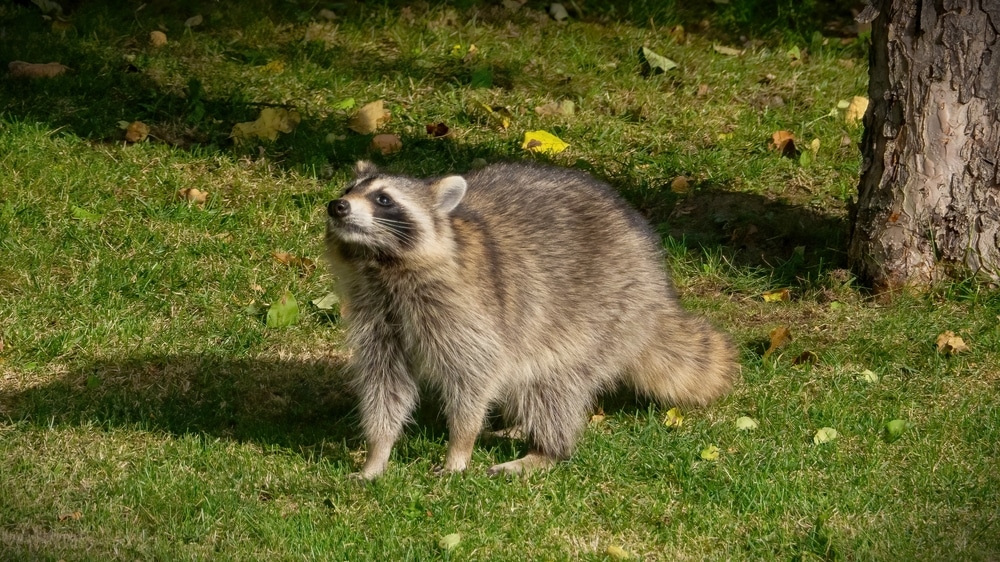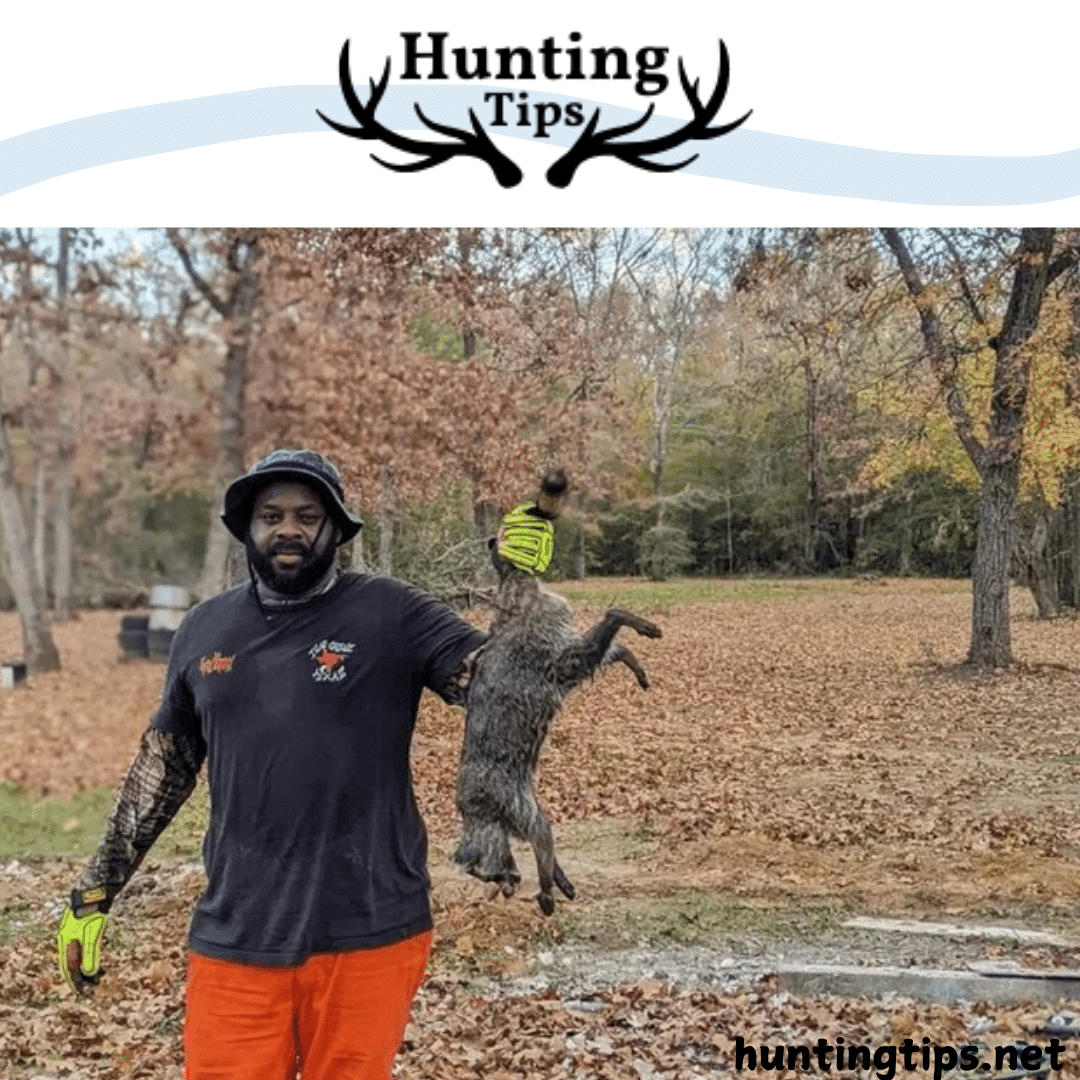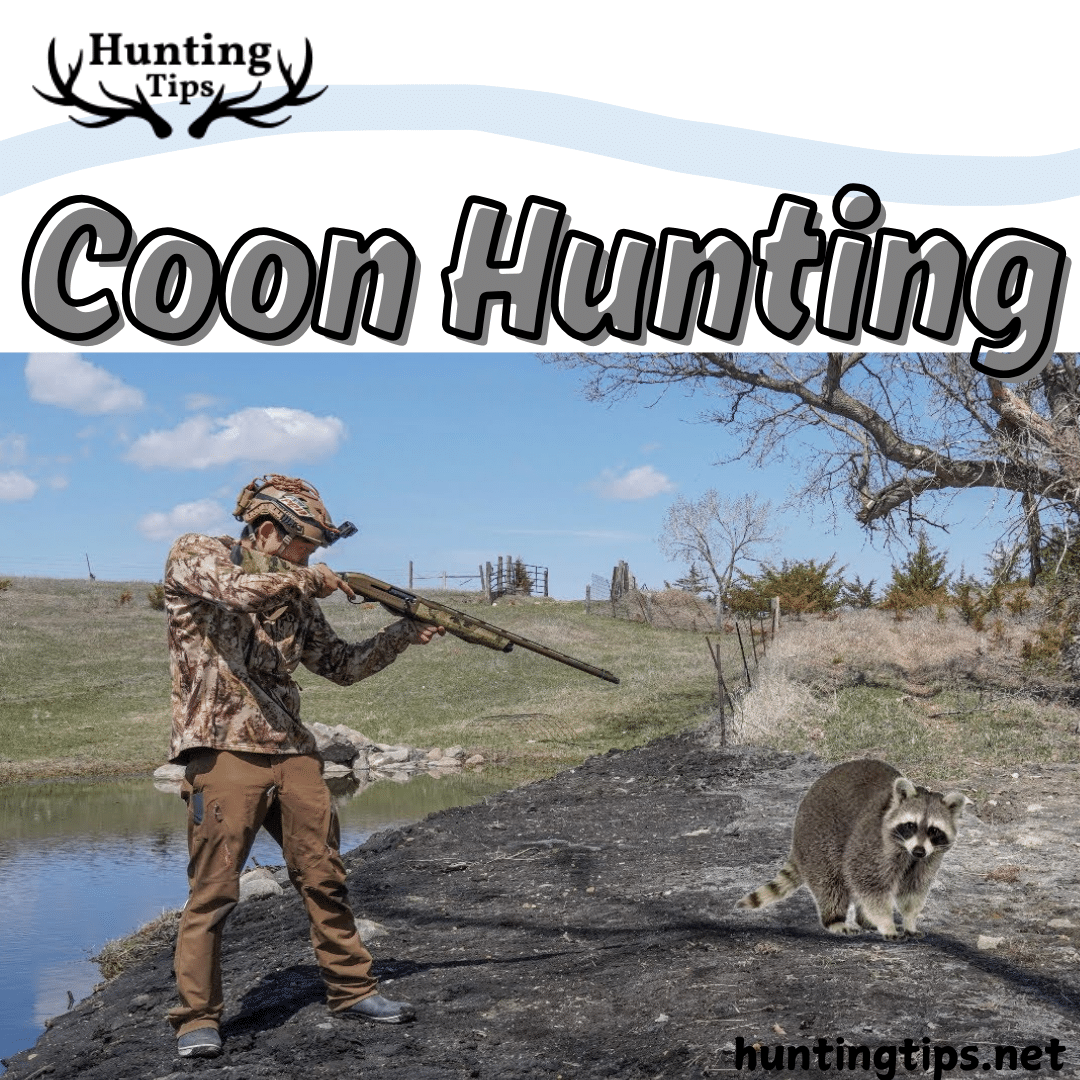Table of Contents
There is no doubt in the fact that hunting is one of the most refreshing ways to enjoy a vacation, especially for those who love hunting. When it comes to hunting, there are several prey to aim for, such as wolves, snipes, and ducks. Each of these animals and birds requires optimal tricks and tips for maximized success. All you need to do is set up a hunting camp and practice your skills. When we talk about different animals, we can’t deny the trend of coon hunting. All it requires is to follow some basic steps and there you go with your perfect hunt. So, to help the hunt aficionados, we have designed an article guide to help you master the skills needed for hunting a raccoon.
Coons or Raccoons: Know the Animal

Before delving deep into the tips, I think you should know a bit about this animal. Most often known as a “coon,” the raccoon is a nocturnal animal native to North America. Raccoons are distinguished by their characteristic facial mask, ringed tail, and grayish-brown hair. They are also well-known for their intelligence and environmental adaptability. Raccoons are hunted for their fur and as a game in sport coon hunting; however, their main food sources include fruits, nuts, and small game. It is worth mentioning that hunters pick up different coon hounds, such as redbone coons, black and tan ones, and treeing walkers to take part in different hunting competitions such as the world hunt. Raccoons can cause damage to property and crops, so they are controlled somehow through hunting.
Key Traits of Coons
Let’s talk about the key traits of raccoons that make them ideal for coon hunting. Of course, every animal has different traits that make them unique from other animals. So, let’s talk about them in detail.
1: Nocturnal Behavior
Most raccoons are nocturnal animals, which means that they are most active during nighttime. They are the perfect prey for hunters who enjoy the challenge of hunting game in the dark because of their nocturnal habits. But nighttime raccoon hunting requires certain coon hunting gear and strategies in order to successfully navigate the dark and find their elusive prey.
2: Adaptability
Due to their remarkable adaptability, raccoons can live in a variety of environments, such as farms, urban areas, marshes, and woodlands. Because of their flexibility, hunters can find them as targets in a variety of settings, including the woods and areas close to populated areas. Furthermore, despite their adaptability, raccoon behavior might change based on their surroundings. Thus, hunters must modify their tactics accordingly.
3: Intelligence
One of the most important key characteristics is intelligence and sharp-mindedness. People often underestimate raccoons’ intelligence and capacity for problem-solving. Because of their reputation for being inquisitive and creative, they can be difficult targets for hunters. Moreover, the intelligence of raccoons heightens the thrill of the hunt since hunters have to use cunning and expertise to outwit these astute animals.
4: Fur Quality
Due to its warmth and durability, raccoons’ dense fur is highly prized. Raccoon fur is frequently used to make blankets, accessories, and apparel. Moreover, pursuing raccoons for their fur can be a lucrative venture, especially for hunters engaged in professional sport coon hunts or looking for ways to increase their earnings through fur trading.
5: Size and Agility
You should know that Raccoons are not very big creatures, but they are incredibly agile and have fast reactions. They can easily avoid both predators and hunters since they are adept climbers and swimmers. Because of their small size and agility, they make a difficult target for hunters, and effective hunting demands accuracy and skill. In addition, the agility of raccoons contributes to the unpredictable nature of the hunt since they can swiftly blend into the thick undergrowth or scale tall trees to flee their attackers.
6: Hunting Tradition
Around the world, coon hunting has a rich and ancient history, especially in areas with a high raccoon population. For many years, people have been hunting raccoons as a hobby. Enthusiasts have taken part in coon hunting competitions, tournaments, and events. Because of these hunting customs, hunters develop a strong feeling of community and camaraderie, forging enduring relationships and friendships around a common love of hunting.
The above-mentioned traits are known to make the coons ideal for hunting purposes.
11 Tips to Follow for Seamless Coon Hunting

If you are up to a coon hunting contest, there are certain professional tips to follow. If you are looking for that, look no further; we are here to help you.
Below are some of the expert tips that can make you a successful coon hunter:
1. Know Your Quarry for Coon Hunting
- The first important tip is to know your quarry. Studying raccoon behaviors, favored habitats, and usual movement patterns are key to understanding their behavior. Hunters frequently seek raccoons for their fur and as a game in coon hunting competitions, particularly during the hunting season.
- Understanding how raccoons move can be very important. They are known to follow streams, and they frequently make their dens in hollow trees or burrows, where they leave scent trails that can be followed by hunting dogs.
- Studying their activity in various seasons, such as the breeding season or the winter hibernation, can also yield important information on their habits and movements.
2. Inspect Your Potential Coon Hunting Areas
- Scouts should look for evidence of raccoon activity, such as tree rub marks, scats, and footprints. Raccoons are prone to visit places with plenty of food supplies, such as cornfields or berry patches.
- Keep an eye on raccoon behavior in different regions of your hunting grounds by using trail cameras. This can help you in locating the ideal locations to set up camp for hunting and identifying high-traffic regions.
- Think about the hunting area’s terrain and wildlife. Focus your efforts in forested regions, thickets, or brushy terrain since raccoons seek dense cover for shelter.
3. Select the Proper Gear
- Essentials for coon hunting include a strong hunting dog, an effective flashlight or headlamp, weather- and terrain-appropriate clothing, GPS tracking devices for your dogs, and a firearm if allowed and needed.
- Breeds such as the Plott Hound are good choices for coon hounds because of their tracking skills and field endurance. During night hunts, choose high-quality lighting gear, including handheld spotlights or LED headlamps, to properly enlighten your surroundings.
- Look for specific gadgets made for coon hunting dogs, such as GPS collars, tracking devices, and training aids, at dog supply stores or online.
4. Use Calls and Decoys for Efficient Coon Hunting
- To attract raccoons, use hand or electronic calls that resemble their sounds, distress sounds, or mating calls. Try a variety of calls to see what gets raccoons in your region to respond.
- Decoys can be useful in enticing raccoons closer, such as motion or realistic-looking raccoon decoys. To get raccoons to come closer to your hunting spot, place bait in strategic locations.
5. Set Up Strategically
- To prevent drawing raccoons’ attention to yourself with your scent, position yourself downwind from your intended region. Select areas that have sufficient shelter and visibility, such as those beside food supplies or on routes of travel.
- To direct raccoons toward safe routes, think about using natural features like fence lines, ridgelines, and creek beds. Your chances of coming across raccoons can be increased by setting up next to these natural funnels.
6. Use Dogs Wisely for Coon Hunting
- Teach your coon hunting hounds how to locate and successfully trap raccoons. To improve your dogs’ tracking skills and field obedience, start training them early on.
- Focus on building a solid relationship and efficient communication with your pets. You can gain insight into your dogs’ behavior and track raccoons by becoming familiar with their body language and vocalizations.
7. Practice Ethical Coon Hunting
- Safety and moral hunting methods should always come first. Make sure you are aware of and abide by all hunting laws, especially those pertaining to bag limits, dates of the season, and permissible shooting techniques.
- Use moral shooting techniques to guarantee a humane and tidy kill. Target important organs to save suffering and expedite the recovery of downed game.
- Reducing your negative effects on the land and always acting with good sportsmanship are ways you can show respect for the environment and other hunters.
8. Be Ready for Night Hunts
- Hunting for coons at night requires extra planning. In order to fit into the darkness, dress warmly and comfortably. You might want to consider wearing camouflage or dark-colored clothing.
- When working long hours in the field, be sure to bring lots of water and food to stay hydrated and energized. For your lighting equipment, bring extra batteries or rechargeable power sources so you have plenty of light all night long.
9. Track and Trail
- If you go hunting with your hounds, be ready to trail along with them as they follow the scent of the raccoons. Remain alert and prepared to respond as soon as the dog indicates that it has located a raccoon. Keep an eye on your dogs’ whereabouts and progress using GPS tracking devices, particularly when they’re in crowded or unfamiliar areas. This will make it easier for you to learn about the hunting area and maintain communication with your dogs.
10. Learn from Coon Hunting Experience
- Every hunting excursion offers priceless teaching moments. Keep an eye out for what works and what doesn’t, and prepare to adjust your tactics in light of your results.
To document specifics about your hunts, such as the weather, where you hunted, and your effective strategies, keep a hunting notebook. Reviewing previous experiences will help you spot trends and become a better coon hunter.
Different Ways for Coon Hunting

You can hunt the raccoons using various methods stated below:
1. Spotlighting for Coon Hunting
- The first method is known to be very a popular technique, particularly at night, for coon hunting. However, as spotlighting might be banned in some places or at particular times of the year, it’s important to confirm local laws. This technique entails lighting raccoons at night with a strong spotlight. With the spotlight, hunters search the area; though this method can be useful for locating raccoons, if not used wisely, it can also frighten them.
- The best time to coon hunt, which is usually during the hours of darkness when raccoons are most active, should be kept in mind by hunters while using spotlighting.
2. Dogging
- And who doesn’t know about dog hunting? Dogging is a traditional and successful technique for coon hunting. Raccoons are tracked and treed by specially trained coonhounds, such as Treeing Walker, Redbone Coonhound, or Black and Tan.
- When the dogs find a raccoon, they alert the hunter to its location by barking and marking it with a tree. Furthermore, in tough terrain or extensive cover, hunters frequently rely on their dogs’ expertise to direct them to raccoons.
- Organizations such as the United Kennel Club, which supports coonhound events and competitions, recognize and encourage dogging.
3. Coon Hunting Through Trapping
- The next very important method is known as Trapping. It is an additional technique for coon hunting, especially when raccoon numbers are being managed or raccoons are being harvested for their fur. You can place live or body-gripping traps next to food sources or along raccoon paths.
- Apart from hunting, trapping can be a useful strategy to control raccoon populations in places where they are damaging property or crops.
- Understanding local trapping laws and regulations, in addition to being familiar with raccoon behavior and habits, is essential for successful trapping.
4. Calling Tactics for Coon Hunting
- To attract raccoons, Hunters imitate their sounds, distress sounds, or mating cries. To produce these noises and lure raccoons to come within shooting distance, use hand calls or electronic calls.
- However, calling needs expertise and patience because raccoons may be reluctant or wary of answering calls. Hunters need to be ready to patiently wait for raccoons to go into range.
- It takes effort and practice to learn how to hunt raccoons efficiently using calls and to figure out which calls work best in certain hunting settings.
5. Still Hunting
- The next method seems to be a bit quirky, however, it isn’t. Still hunting is stalking raccoons by silently walking through the forest or along their paths. Hunters might wait for raccoons to show up by sitting or standing in important spots.
- Furthermore, to predict raccoon movements and recognize them in the field, still hunting needs sharp observational skills and an understanding of raccoon behavior.
- The best time for coon hunting through still hunting can vary based on factors including raccoon activity patterns, moon phases, and weather.
Hunters can select the approach that best fits their tastes, skill level, and hunting area, as each strategy has pros and cons of its own. Hunting ethics and safety should always come first, regardless of the technique used.
However, if you want details on the best weather for coon hunt, check out this article.
Conclusion
Summing up, the article covered details on coon hunting, AKA raccoon hunting. Different methods and techniques are also enlisted for seamless hunting endeavors. So, if you are a hunting aficionado, practice these tips and enjoy a smooth hunt.
Racing with the Hounds: Coon Hunting Excursions!


